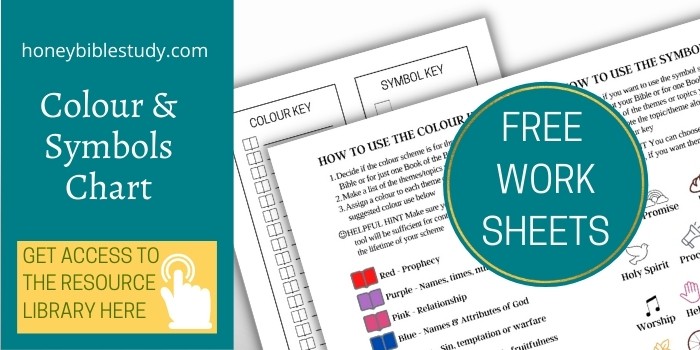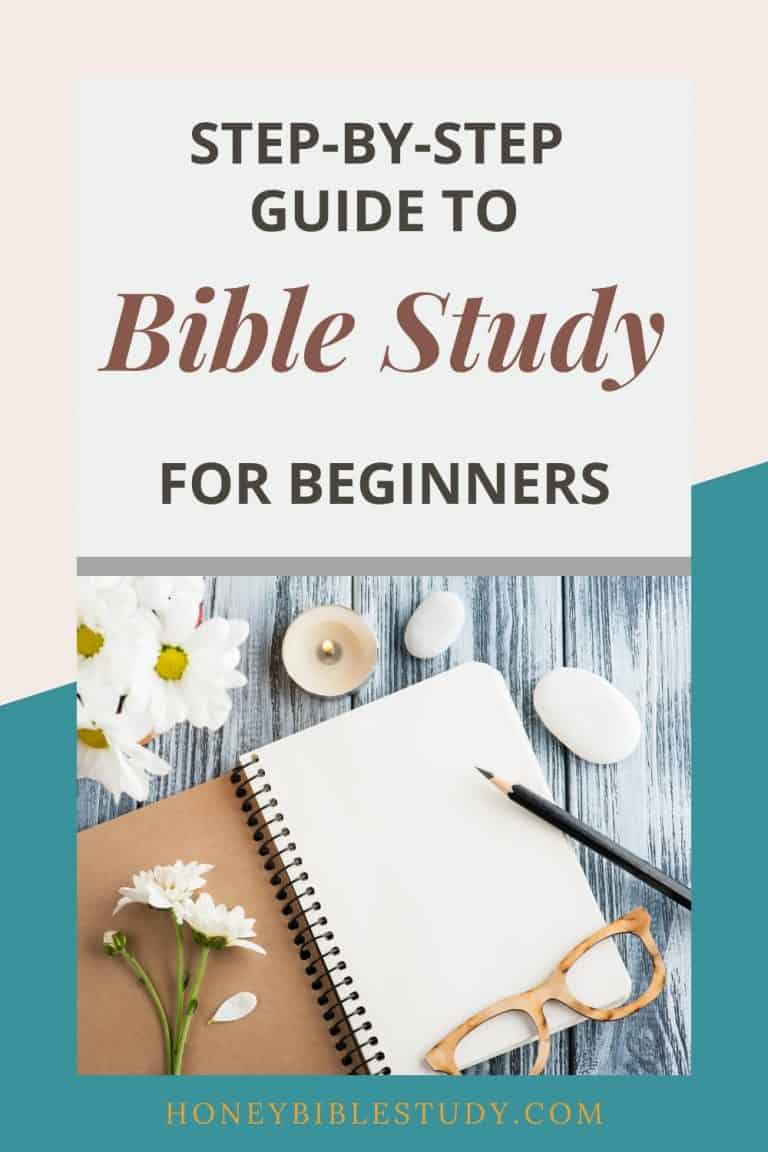How To Make Notes in Your Bible
Many years ago I came across an old book with the intriguing title ‘How To Mark Your Bible’ – part of the book outlined a method of how to make notes in your Bible. Some Christians refer to this as Bible Journaling ie recording your notes, insights and other information alongside the Bible text.
Whilst Bible journaling can take on a more decorative form where specific Bible verses are highlighted with an illustration, this post is about making notes in the margin of your Bible.

A Brief History of Making Notes
Have you been told to never write in books? You may have been told to write anything in a Bible is sacrilegious. Often that statement is supported by the (mis)use of the following verse
Every word of God is pure; He is a shield to those who put their trust in Him. Do not add to His Words, lest He rebuke you, and you be found a liar.
Proverbs 30 v 5-6 (NKJV)
This ‘adding to God’s word’ refers to making the word of God say something He hasn’t intended, in other words twisting the word of God. When you write notes in your Bible it’s quite the opposite. Writing notes is a way to record your understanding of what you’ve read, and learned from it.
I’m sure you have heard of DL Moody, CH Spurgeon, Billy Graham, perhaps even the hymn writer Frances Ridley Havergal. What did they all have in common? They all wrote notes in their Bibles alongside the text!
Perhaps you’ve been blessed by inheriting a Bible from a relative filled with their precious thoughts and notes. But where did they start? Will your Bible ever look like theirs? How can you start?
How to Make Notes In Your Bible
The simplest form of note-making is to write information that you don’t want to forget alongside the relevant passage of Scripture. These notes could include:
- The definitions of difficult words
- References to other Bible verses
- The meanings of the names of people or places
- Dates when the passage was preached or the verses became significant to you
- Textual notes – explanation of the passage in simple terms
- Underlining verses or words
Making notes in your Bible can be a tremendous help if you want a permanent record of your study right there next to the text. But it can get overwhelming unless you have some sort of system, so let’s explore ways of doing just that!
5 Ways of Making Notes
- You can underline verses and link them with others that compare, contrast or are parallel in thought (like I found in the old book I mentioned).
- Use Highlighters to indicate the passage you are making notes on. Use a matching coloured pen to write notes in the margin. This option is probably the simplest to follow as you can grab any colour you fancy and start writing. By using matching ink colours you can link up the text with the notes wherever they are placed on the page.
- Try having a colour-coded system where the colour corresponds to a particular topic or theme. The advantage of this method is related notes and Bible portions are easily spotted when leafing through your Bible. The disadvantages are (a) you might have more topics than colours available. (b) the Bible verses may have more than one topic or theme and the overlap can be difficult to distinguish.
- Use symbols to indicate your topic or theme. Draw the symbols alongside the Bible verse or above actual words/phrases. Kay MacArthur has implemented this method in her Precept Ministries Inductive Bible Study.
- Use a combination of the above methods by developing your own system of colours and symbols. The advantage to using this is it’s personal to your studies. However, you must create a key or record of what you are using. Read on to find out more.
Create Your Own Note-Taking System
For my personal system of Note-making I use:
- underlining for key verses or significant words
- colour for a very limited range of topics or themes
- sometimes symbols for a visual prompt.
I also use abbreviations. I came across this idea in a beautiful old Bible I’ve inherited. The original owner was a Clergyman with quite large handwriting. As I explored his old Bible, I realised that he had a system of abbreviations for common words. This meant his notes were more compact. I don’t know where or how he developed this system but it is one I have used ever since. Added to these are the abbreviations that I’ve picked up from various sources. You may already be familiar with some of them:
- wh – which (draw a horizontal line over the hump of the ‘h’)
- w – with (draw a horizontal line over the letter ‘w’)
- i/s – inside
- o/s – outside
- @ – at
- cp – compare ( verse/passage links)
- sym – symbolic/symbolism
- cont – contrast
- sp – spiritual
- Bk – book
- fr – from
- use these dots ∴ to mean ‘therefore’
- use these dots ∵ to mean ‘hence’
- Heb – Hebrew
- Gk – Greek
- [a word] = [followed by the meaning] – where you want to show the definition
Use The Right Tools for Making Notes in Your Bible
Please note that the following paragraph has affiliate links which means if you follow through to make a purchase I will earn a small commission at NO EXTRA cost to you
I like to use a fine black fibre-tip pen with ink that doesn’t bleed through the thin paper in my Bible. My favourite pens are Edding 1800 which also come in different colours and pen nibs size. I use a small thin metal ruler for drawing neat lines. And I like to use crayons like these rather than highlighters for adding colour to my notes.
For more information about using coloured pencils and highlighters check out the post Using Colour in Your Bible here on this website.
Ready to make a start making notes in your Bible? Start with creating your personal key to marking your Bible …….
Free Printable available for Bible Note Making
There’s a free colour and symbol chart available. You can grab yourself a copy by signing up for access to the Resource Library HERE.








Thank you fore the tips wish me good luck on finishing my scriptures.
Great suggestions! I have a few more that have worked well for me:
1. I write with black ink and place a colored dot beside the note that corresponds with the highlighted verses. No need to switch out colored ink.
2. I use the ESV journaling Bible. The margins are wide and the pages are slightly thicker which is a characteristic of journaling Bibles.
3. Even with the wider margins, for extensive notes, I use a supplemental journal and will refer to it in the margin. For example, 1.16 refers to journal one page 16. I’m thinking of replacing that system with a looseleaf notebook divided by the different books of the Bible.
4. I use colored pencils that can be sharpened manually. Much more control than crayons and highlighters.
5. I place the verse number beside the note because the note may not fit opposite the verse. I never worry about getting my notes out of order for that reason.
6. My Bible doesn’t have cross references but I prefer Blue Letter Bible’s much more extensive cross references.
Thank you so much for sharing these ideas Barbara. I love the third one especially!